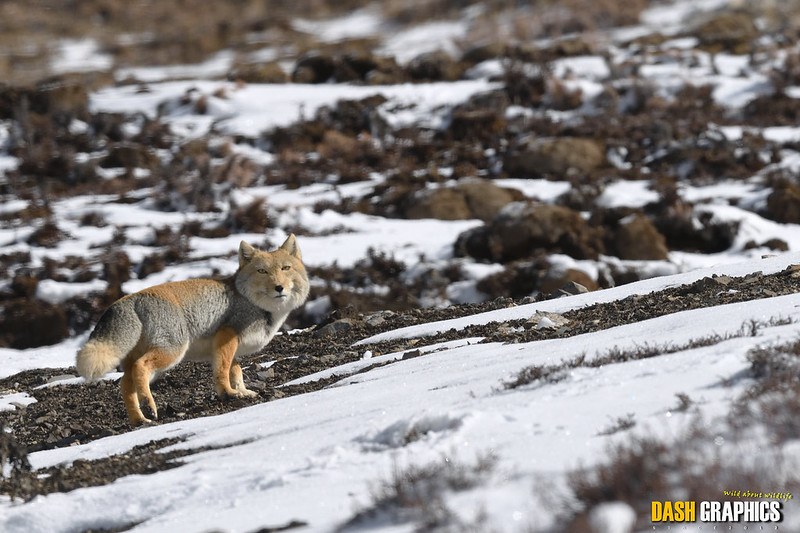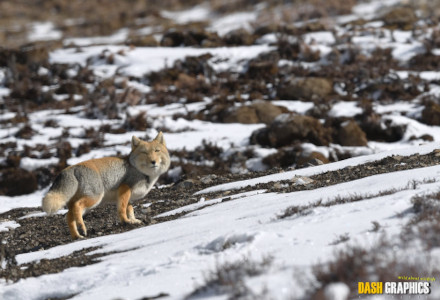
Photographer: Dash Huang
CC License: https://bit.ly/2WT7Cvg
Tibetan Sand Fox Facts
- The Tibetan Sand Fox evolved as a specialized carnivore. This animal has a skull that displays the most specialized shape for a carnivorous behavior of any known species of true fox.
- The fox inhabits an extensive, though comparatively harsh, territory range. The IUCN has listed it as a Species of Least Concern, due to the great extent of its range.
- This vulpine species has proven itself to be highly adaptable and has found numerous ways to thrive in its environment.
- Highly resourceful, it has developed a partial state of symbiosis with brown bears. The two species actually cooperate to hunt prey together.
Related Articles
Crab Eating Fox Arctic Fox Bat Eared Fox
Photographer: Dash Huang
CC License: https://bit.ly/3jxpJhU
Tibetan Sand Fox Physical Description
The Tibetan Sand Fox is rather small, compared to most foxes, with no appreciable degree of sexual dimorphism.
Adults average 28 in (70 cm) in total body length and about 12 lb (5.5 kg) in weight. In addition, the tail is usually about 16 in (40 cm) long.
The soft, dense fur presents in random combinations of tan and gray. Also, the tip of the tail typically shows bright white.
The ears of this species remain rather short in comparison with other vulpines. In addition, the forehead has a concave shape.
However, the most noteworthy characteristic remains the distinctively square-shaped face. So the photos above are not photoshopped after all.
- Kingdom: Animalia
- Phylum: Chordata
- Class: Mammalia
- Family: Canidae
- Genus: Vulpes
- Species: V. ferrilata
Image Credit: Udo Schröter
CC License: https://bit.ly/3lDLmQG
Tibetan Sand Fox Distribution, Habitat, and Ecology
The Tibetan Sand Fox roams a rather extensive, and restricted, range. The species evolved along the Tibetan Plateau and inhabits Tibet, China, Nepal, and Bhutan, in Asia. Yet this creature only inhabits altitudes between 11,500-17,100 ft (3,500-5,200 m).
The Tibetan Sand Fox also only inhabits arid or semi-arid grassland. Due to these restrictions, interactions with humans remain relatively infrequent – perhaps better for the fox.
The species also lives primarily solitary, and hunts by day. Individuals hunt often and prey mainly on pikas, yet also consume lizards, rodents, and small hares opportunistically.
As we briefly mentioned above, the animal also developed the habit of hunting jointly with brown bears. To the best of our knowledge, this trait remains unique among vulpines.
Species Sharing Its Range
Check out our other articles on Bois Dentelle, Ebor Falls, Spotted Handfish,
7 Stunning North American Lepidoptera, Vaquita

